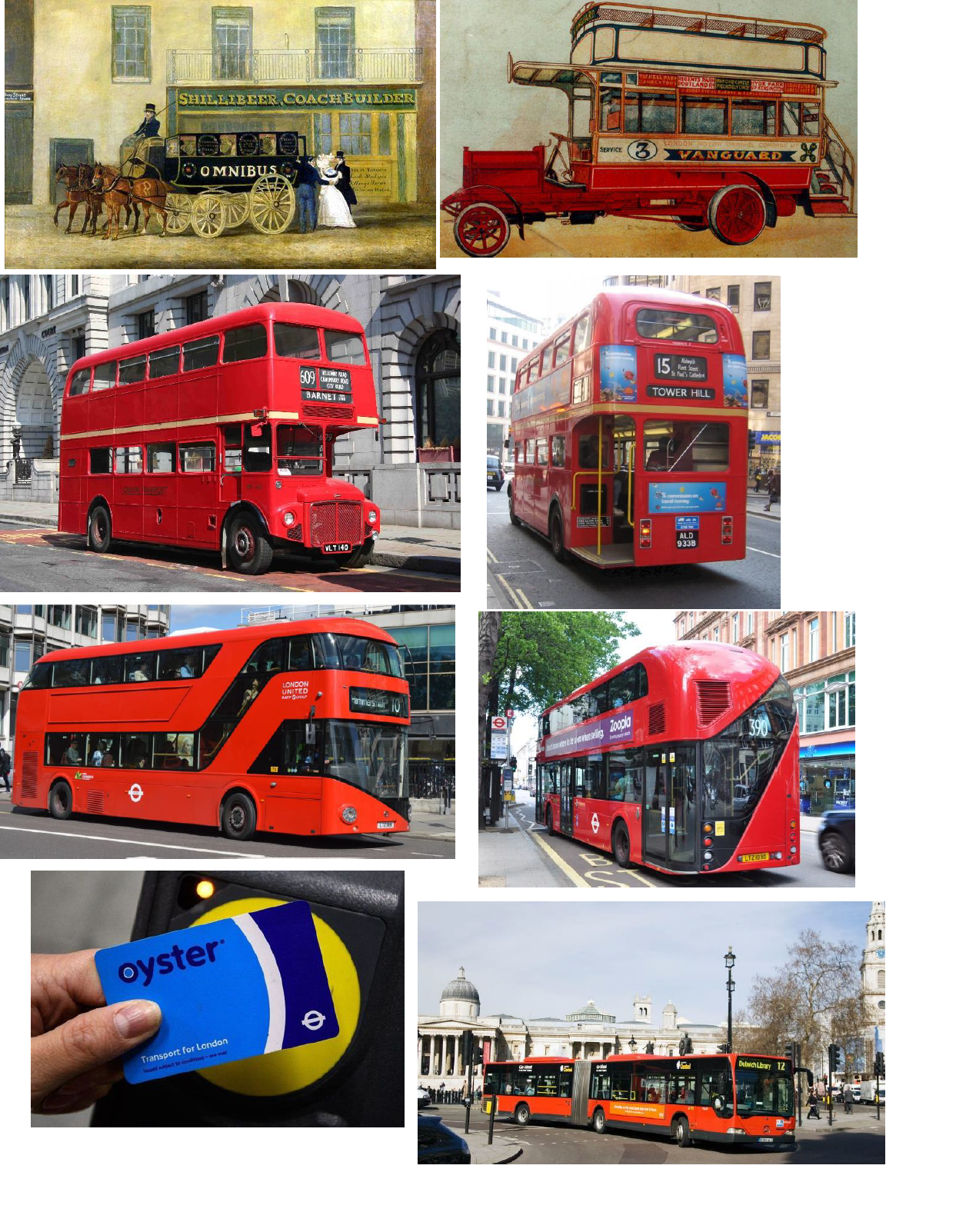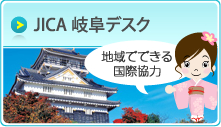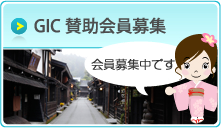 |
(2023.05.26) |
日本語と英語版があります。 This post is available in both Japanese and English, please scroll down for the English version.
....
ロンドンのバス
...
イギリスと聞くとロンドンの赤い2階建てバスが思い浮かびませんか。今回は、この世界でもっとも有名なバスについて説明します!岐阜にも多くのバスが走っていますが、イギリスのバスと日本のバスには違いがありますので、今から紹介します。
実は、イギリスのバスも日本と同じように地域ごとにバス会社が違います。例えば、岐阜には岐阜バスがありますね。その結果、バスのデザインも地域毎で異なります。しかし、イギリスでは、ロンドンだけ特別な交通機関体制になっています。ロンドン以外の都市、地域には私営バスが走っていますが、ロンドンは「ロンドン交通局」という地方行政機関が全てのバスを管理しています。
1800年代、ロンドンでは上流階級の人のみ馬車を所有し、移動手段として利用していましたが、1829年に初めて一般の人向けに馬車による移動サービスが提供されました。その馬車は、ラテン語で「みんなのため」という意味である「オムニバス」と名付けられました。その後、それが略され「バス」となりました。しかし、その時代(産業革命の時代)、労働者階級の人々には乗車券が少し高すぎました。最初のバスは、まだ2階建てでも赤色でもなく普通の馬車でした。実は、イギリスは2階建て車両の発祥地ではありません。1828年に、フランスで初めて「2階建て」馬車が誕生しました。エンジンで動く2階建てバスは20世紀初頭にロンドンで走行するようになりました。
最初のバス事業が成功したため、バスの台数だけでなく、バス会社も激増しました。しかし、規則がほとんどなかったため、バス会社の間で、競争が激しくなり、乗客獲得のために運賃を引き下げることが一般的でした。
バスの色は路線ごとに決まっていました。しかし、1905年に、ある会社が同社の全てのバスを赤色と白色に統一し、路線を示すために番号を使い始めました。その会社が赤を選んだ理由は不明ですが、ロンドンの赤いレンガの建物に似合っていたからかもしれません。また、当時は、色とりどりのバスが走っていたので、特に理由はなかったのかもしれません。1908年に別のバス会社が、ロンドンでのバス事業を独占するため、多くの企業を買収し始めました。2年後にはほぼ一つの会社に統合され、バスの色は赤色に統一されました。同時に価格競争がなくなりました。その後、現在まで赤い2階建てバスはロンドンの象徴となっています。
では、次にイギリスのバスと岐阜バスの違いについて紹介します。
イギリスでは乗降口が2つある場合は、前のドアから入り、真ん中のドアから降ります。岐阜バスは反対で、後ろのドアから入り、前のドアから降りますね!ドアと言えば、例外もあるかもしれませんが、私が見たことがある日本の全てのバスには、ドアが2つあります。私が子供の頃、ロンドンのバスにもたいてい2つのドアがありました。けれども、他のバーミンガム、リーズといった大きい町では、2階建てバスにドアが1つしかないことが普通です。その場合、電車と同様に、乗る人は降りる人を待っています。
イギリスのバスが全て2階建てではありません。ロンドンでもバーミンガムでも、1階建てのバスも見られます。あまり混雑しない路線では1階建てバスを使います。小さな町では、1階建てバスしかない例もあります。また、ロンドン以外の地域では、赤色のバスとは限りません。
実は、ロンドンのバスは、たびたびモデルチェンジしています。先ほども書きましたが、私が子供の頃、ロンドンのバスはほとんどが2つのドアがありました。しかし、2012年に、ロンドン市長はニュールートマスター(New Routemaster)と呼ばれる新しいモデルを発表しました。ニュールートマスターにはドアが3つあります。現在、ロンドンを走っているバスの半分はドアが3つあるニュールートマスターで、残りはドアが2つの別モデルです。ニュールートマスターは、どのドアからも乗降可能です。1つか2つドアの2階建てバスは真ん中に階段が1つありますが、ニュールートマスターには2つ(真ん中と後ろのドア近く)の階段があります。バスに乗る時、乗車賃をSuicaや岐阜のayucaのような「オイスターカード」かクレジットカードで支払います。オイスターの意味は牡蠣(かき)です。イギリスは、日本と比べてキャッシュレス化が進んでいて、乗車賃を現金で支払うことはできません。
旧型のルートマスターは、後方の乗降口に扉が付いていませんでした。そのため、バスの乗車間際や走行時の飛び乗り・飛び降りが起き、安全性に問題がありました。また、車掌が乗車賃を集めていましたが、その人件費が負担となり、2005年に第一線を退きました。
その頃、多くの乗客を乗せることができる連節バスが走行するようになりましたが、2011年にロンドンをはじめ、イギリス中で運行が終了しました。連節バス運行継続の是非について、2011年に国民の間で物議をかもしましたが、その車体の長さは交通渋滞がひどいロンドンの道には合わなかったようです。
旧型のルートマスターは、現在、路線バスとしては運行していませんが、その愛らしい形からロンドンの象徴として、今も観光バスとして使われています。観光バスと言えば、日本にもオープントップバスがありますね。ロンドンでもオープントップバスが観光バスとして走っています。このバスに乗れば、ロンドン中の観光地を巡ることができます。
最後になりますが、ロンドンのバスは歴史が古く、特別です。バスでのマナーは日本と同じように飲食や大きい声で話すことは好ましくありません。日本では、公共交通機関での携帯電話での通話はマナー違反とされますが、イギリスでは静かな声で話すには問題ありません。ロンドンに行く機会があれば、ぜひ赤い2階建てバスに乗ってみませんか?ちなみに、公衆電話ボックス、郵便箱も同じ赤色です!
.....

....
London Buses
...
The red double decker bus has become a global symbol of not only London, but also the UK as a whole. Everyone has probably seen them before, if only in photos. In this post, I will explain the history of London's buses, as well as some of the differences between bus etiquette in Britain and Gifu, since there are many buses here in Gifu.
When you think of London, or even the UK, perhaps red double decker buses come to mind. Like in Japan, bus operators vary in different parts of the UK. For example, here in Gifu, we have the Gifu buses run by one operator. The result of this is that depending on the area, bus designs vary. The system for bus operation in London is different from the rest of the UK, since London is the capital city. All public transport in the city is run by a local government body called Transport for London, or TfL, which differs from most other cities and regions where services are often run by private companies.
Regarding the history of London's red double decker buses, the first ever bus in London began operation in 1829. It was named "omnibus", which is Latin for "for all", and this was later shortened to just "bus". Prior to the introduction of buses, upper class citizens owned horse-drawn carriages, but now a transport service was available to ordinary people. That being said, at the time (the Industrial Revolution), bus fares were too expensive for most working class people. These early buses were not double deckers nor were they red; both of these features would come later, and they were horse-drawn carriages. In fact, the double decker bus was invented in France, rather than in Britain, in 1828, although it was still horse-drawn. The first engine-powered double decker bus was implemented in London in the early 20th century.
These first bus services were highly successful, leading to not only a rapid increase in the number of buses, but also in the number of bus operators. There was little to no regulation in the early days, resulting in chaos, with high levels of competition between operators. The operators would undercut each other, reducing fare prices to appeal to passengers. The colour of the buses changed depending on the bus route, and the colours functioned as showing which route was which. However, in 1905 one bus operator painted their entire fleet red and white, and began using numbers to mark the different routes. It isn't clear why red was chosen, although some suggest it was because it matched London's red brick buildings. That being said, at the time there were buses in many different colours across London, so there may not really be any meaning behind choosing red. In 1908 another bus company bought out many of their competitors in order to achieve a monopoly over London's bus services. They chose to keep the red buses, and within two years nearly all of London's buses had turned red, after the amalgamation of many operating companies. Another effect of this monopoly was that the chaos of numerous providers undercutting each other ended, and more regulation followed. So, London's signature bus was born, and these red double decker buses continue even today.
On the subject of boarding and alighting buses, the main difference between buses in Britain and buses in Gifu is that when British buses have two doors, you board from the front door, and alight from the middle door. This is the opposite in Gifu, where you board from the middle door and alight from the front door. However, not all British buses have two doors. There might be exceptions, but here in Japan I have only seen buses with two doors. When I was a child, most buses in London had two doors, but in other big cities, such as Birmingham and Leeds, it is normal for double decker buses to only have one door. In this case, the manners for getting on the bus is similar to trains, where it is polite for people boarding to wait for everyone alighting to get off before starting to board. In addition, not every bus in the UK is a double decker, and outside of London, not every bus is red. In big cities, routes which are less crowded will use single decker buses, and smaller towns will often just have single decker buses.
London's bus models change frequently, for example, as previously mentioned most of the buses in London had two doors when I was a child. However, in 2012, the Mayor of London introduced the New Routemaster, a new version of the most famous bus model. The Routemaster differs from other bus models because it has three doors, and currently about half of the buses in London are three-door Routemasters, and the other half are different models that only have two doors. When you ride a Routemaster, you can get on or off from any door. In double decker buses that have one or two doors, the staircase up to the second deck is in the middle of the bus, however in Routemasters, there is another staircase at the back of the bus, next to the back door. Just like Japan's Suica card or the Gifu bus-specific Ayuca card, in London there is a transport card called the Oyster card. In Britain, using cash for payments is less common than in Japan, in fact cash cannot be used at all on London's buses.
Given that the Routemaster currently operating in London has been coined the "New Routemaster", there is also an "Old Routemaster", which originated the three-door design used in the current Routemaster. While the New Routemaster has a modern look, the Old Routemaster has a classic design. Although the Old Routemaster had three entrance and exit points, the back door was actually just a gap, without an actual door! This meant that you could hop on and off the bus when it was moving, or stopped at a traffic light, rather than just when it had stopped at a bus stop. This was quite dangerous, and before the days of the Oyster card, there were many people who avoided paying the fare when they got on the bus. Originally, Old Routemasters also had conductors on board to collect fares and make sure everyone paid, but paying their wages was seen as expensive by Transport for London. In the end, they phased out both conductors and then the Old Routemaster buses in 2005.
As well as Old Routemasters, in 2011 all articulated buses, colloquially called "bendy buses" in London were phased out too. Across the UK, articulated buses have been phased out as double decker buses have always been preferred, although the reasons for this are unclear. In 2011 there was a lot of public debate about whether phasing out these buses was a good idea or not, as like double deckers, they can carry a lot of passengers. However, because of their length, they take up more space on the road than double deckers do, so were seen as exacerbating the problem of London's busy roads.
Despite being phased out, the Old Routemasters remain a symbol of London, so they are still in use as tourist buses. On the topic of tourist buses, open-top tourist buses can also be seen in Japan, and they are widely used for tourism tours in London, to see the main sights the city has to offer. However, they are not used on normal bus routes and many Londoners have never ridden one of these buses!
To sum up, London's buses have a long history and have taken many forms over the years. There are a number of differences between buses in London and buses in other parts of the UK, and while the usage of bus doors differs in Japan and the UK, other examples of bus manners show similarities. Eating on the bus or talking in a loud voice is considered rude in both Japan and the UK. In Japan talking on the phone while on public transport is not allowed at all, but on the other hand, in the UK you can talk on the phone, but you should do so as quietly as possible. If you ever go to London, please try riding one of the red double decker buses! Phone boxes and postboxes are also the same shade of red!
...
写真の出典:左上から右下まで, photos from top left to bottom right
- 18世紀の馬車ロンドンのバス 18th century London horse-drawn bus https://www.ltmuseum.co.uk/collections/stories/transport/short-history-londons-buses#:~:text=The%20bus%20is%20London's%20oldest,any%20point%20on%20the%20route
- 1905年の赤い2階バス 1905 red double decker bus https://www.ltmuseum.co.uk/collections/stories/transport/motor-bus-revolution-1900-1914
- 旧型のルートマスター Old Routemaster https://www.londonbusmuseum.com/museum-exhibits/double-deck-buses/aec-routemaster-rm140/
- 旧型のルートマスターの後ろの扉 Old Routemaster's back door https://www.reidsengland.com/places/london/topics/the-saga-of-the-routemasters/
- ニュールートマスター New Routemaster https://theculturetrip.com/europe/united-kingdom/england/london/articles/heres-the-reason-why-londons-buses-are-the-colour-red/
- ニュールートマスターの後ろの扉 Old Routemaster's back door https://airqualitynews.com/uncategorised/tfl-admits-to-new-routemaster-bus-battery-problems/
- ロンドンのオイスターカード London's Oyster Card https://www.bbc.com/news/uk-england-beds-bucks-herts-46397470
- ロンドンの連節バス London articulated bus https://www.mylondon.news/news/zone-1-news/londons-former-bendy-buses-now-21048385
















